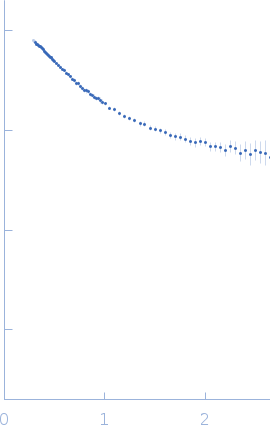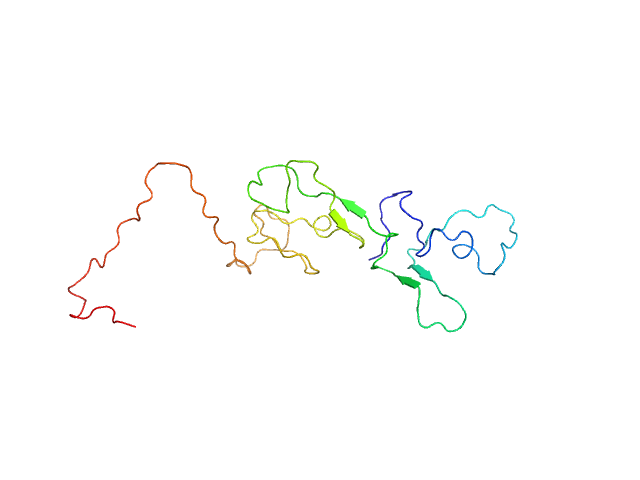| MWexperimental | 20 | kDa |
| MWexpected | 20 | kDa |
|
log I(s)
9.21×100
9.21×10-1
9.21×10-2
9.21×10-3
|
 s, nm-1
s, nm-1
|
|
|
|

|
|

|
|

|
|
Synchrotron SAXS data from solutions of the N-terminal domain of estrogen receptor alpha in 20 mM sodium phosphate, 50 mM NaCl, 0.05 mM TCEP, pH 7.4 were collected on the 16-ID (LiX) beam line at the National Synchrotron Light Source (NSLS-II; Brookhaven, NY, USA) using a Pilatus3 S 1M detector at a sample-detector distance of 3 m and at a wavelength of λ = 0.09 nm (l(s) vs s, where s = 4πsinθ/λ, and 2θ is the scattering angle). One solute concentration of 2.50 mg/ml was measured at 10°C. Three successive 3 second frames were collected. The data were normalized to the intensity of the transmitted beam and radially averaged; the scattering of the solvent-blank was subtracted.
Storage temperature = UNKNOWN
Tags:
idp
|
|
|||||||||||||||||||||||||||